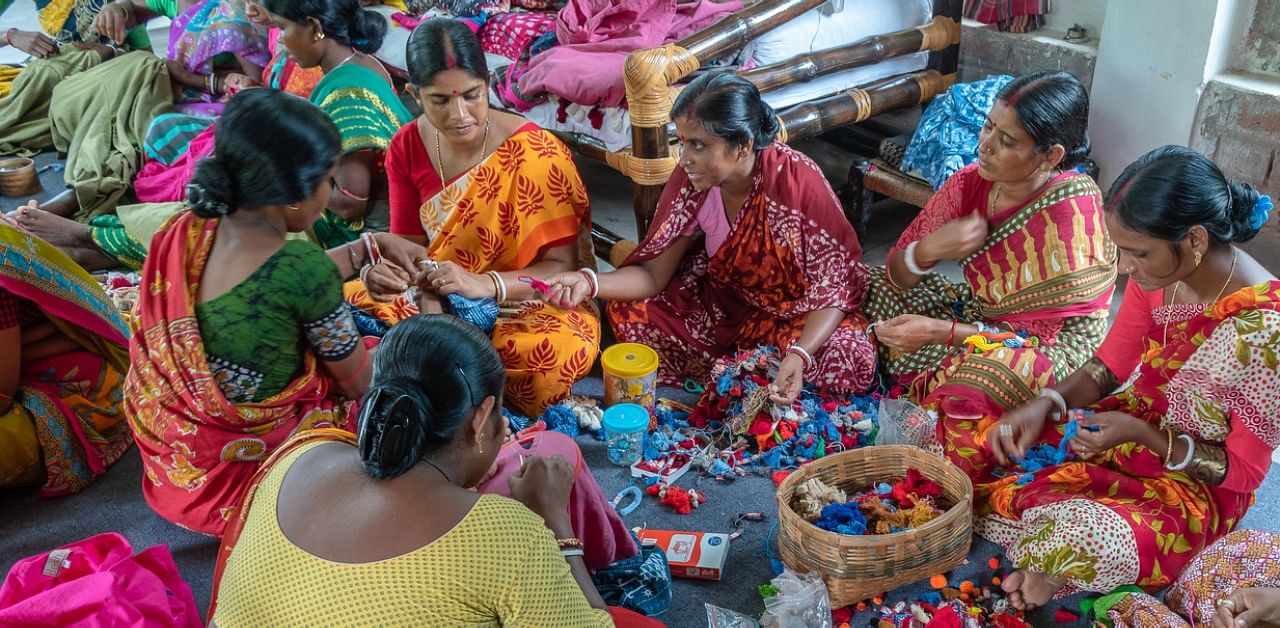
The lack of employability in the formal sector is a harsh reality for the youth of the country. The Economic Survey of 2019 shows that 93 per cent of India’s workforce operates in the informal sector, with uncertain income, lack of social security, and inadequate savings.
The Covid-19 pandemic has further exposed the vulnerabilities of our economy. Job volatility has hit the population as a whole, but the female workforce in particular has been disproportionately impacted by pandemic-related economic distress.
A report released by UN Women in September this year projects that the pandemic will push 96 million people around the world to extreme poverty by 2021. This will constitute approximately 47 million women and girls. The crisis in India is startling. The same report says the pre-pandemic poverty number for women was 13.3 per cent, while it was 12.1 per cent for men. The disproportionate impact of the pandemic will result in the number of women and girls living in extreme poverty going up to 14.7 per cent, compared to 13.7 per cent for men.
Moreover, while India stands a chance to benefit in the context of companies showing willingness to move out of China and relocate manufacturing facilities here, it may not necessarily bring relief to the country’s working women. Let’s take the ambitious ‘Make in India’ programme. It intends to boost local manufacturing and create 100 million new jobs by 2025. Yet, its focus so far has been on sales and scale, and on creating a domestic market for both consumption and production. Addressing inequality in employment is something that it has not taken seriously. In the context of the unemployment gap between the two genders, turning the focus towards women may not just be something the programme itself will benefit much from, but, as also an important social objective.
Women and pandemic-time unemployment
As it is well known, the sudden and stringent lockdowns forced Indian startups and MSMEs to let go of their workforce all of a sudden. In a country which continually struggles to maintain the Labour Force Participation Rates, the Covid-19 pandemic has not only reduced the number of employed women but also made their chances of being re-hired seem bleak.
Another bone of contention has been the New Maternity Bill with six months of paid maternity leave. Though the country ranks the third highest in the world for this generosity, a ripple effect of this has been to discourage startups from hiring, as this becomes a financial burden on smaller businesses.
Since May this year, the government has introduced relief packages to get the economy and livelihoods of people back on track. The Aatmanirbhar Bharat Rozgar Yojana, launched under the Aatmanirbhar 3.0 stimulus package, too has failed to address the concerns of about a half of India’s employable demography.
Providing an equal playing field
As India chases its $5 trillion-economy goal, the need is to strengthen the country’s economic viability, while ensuring greater gender equality. To achieve this, however, the productive workforce must be gender-inclusive. For higher productivity and income, it is essential to promote skill development among women in the formal sector. Women must monetise their skills to create unconventional job opportunities through compulsory vocational training programmes.
To strengthen the ‘Make in India’ vision, empowering women from the grassroots will give the required boost to small-scale industries. Traditionally, women are informally engaged in agricultural activities associated with processing, preservation, and packaging of farm produce. Working in the unorganised sector, Indian women continue to make significant contributions as micro-entrepreneurs.
In rural areas, women play a substantial role in decentralising distribution channels, marketing the government’s programmes and policies. Encouraging women to become job creators will provide a long-term, sustainable solution. The availability of data that shows the success rate of women entrepreneurs can be a crucial step in boosting the morale of rural women.
The country must think of ways to promote the availability and opportunities for women to have equal claims over seed capital to start their own businesses. To streamline the government’s efforts, it is necessary to provide the female workforce with an equal playing field. The need is for lucrative schemes which are predominantly for women so that even when they choose an alternative source of livelihood, they have a formal structure in place to support them.
Applications like 'Aarogya Sakhi', to train women health entrepreneurs, and 'Internet Saathi', for promoting digital literacy among women from the remotest areas, are empowering tools for the ‘Make in India’ initiative. Though such platforms provide an opportunity to train micro-entrepreneurs, the question of accessibility continues to linger.
As work from home becomes the new normal, technology access is a crucial antidote for India’s working women. In the post-Covid-19 recovery phase, the ‘Make in India’ dream can become a reality only if women are promoted as key drivers of growth.
(Rashi Sharma is Junior Fellow at the Observer Research Foundation, New Delhi)
Disclaimer: The views expressed above are the author’s own. They do not necessarily reflect the views of DH.